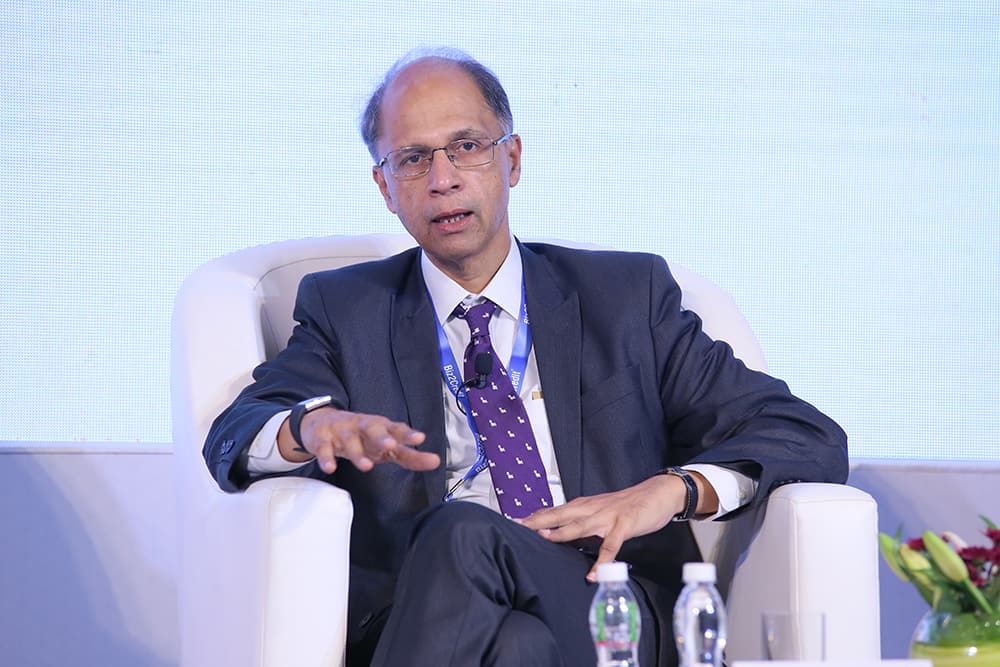Likhit Wagle, general manager of Global Banking & Financial Markets at IBM, speaks to Global Finance about the industry urgency to digitize and counter the threat from Big Tech.

Global Finance: As head of IBM’s banking business, you’re at the center of critical changes in global banking. What are they?
Likhit Wagle: We see three main trends. The first is digitalization. The pandemic has accelerated digitalization programs, and a lot of the activity advanced in Asia is now spreading to the US and Europe—driven to some extent by the threat from Big Tech companies. Alibaba’s market valuation now exceeds JPMorgan Chase’s, and PayPal’s is bigger than Bank of America’s. There is substantial market share migrating away from the banking industry to these Big Tech companies.
Another trend is operational resilience. Regulators are looking closely at whether banks have the processes, methods and policies in place to address the technical deficit within their organizations. In the UK, they are even making nonexecutive directors and board members personally liable for any gaps in operational resiliency. Security is another trend. As banks become more digital and their customers use smartphones to conduct high-value transactions, fraud and cybercrime threats become more potent.
GF: Tell us more about the threat from Big Tech.
Wagle: Big Tech consumer companies like Amazon offer an easy, frictionless customer experience—with an expectation that your order is going to get fulfilled in minutes, as opposed to days or weeks. Banks, by comparison, have made some good progress in terms of creating apps, but the underlying processes still aren’t completely automated: There are a lot of manual handoffs and the documentation associated with transactions is often paper based.
The good news is that some banks have been able to create a similar customer experience to the Big Tech firms. One of these is State Bank of India (SBI), a client. If you want to get a car loan now at SBI, you can do the entire transaction on your smartphone. You don’t have to go to a bank branch, don’t need hard copy documents, no wet signatures—and the whole process from inception to the money landing in your account can take minutes.
GF: What about neobanks? Are they taking business from traditional banks?
Wagle: The neobanks have been challenged to raise deposits for the funding of their lending activities. Specialists like PayPal or Revolut, by comparison, which have focused on gaining economies of scale within a specific space, have been much more successful because their business isn’t driven by getting deposits.
GF: Is digitalization going to winnow the banking sector?
Wagle: There will be winners and losers. If we look at the Australian marketplace, for example, the top four banks were very close to one another in market share and performance ten years ago. Today you have Commonwealth Bank of Australia way ahead of the others, then Westpac, and then the other banks. Differences have opened up because of digitalization programs.
GF: What are the benefits of hybrid cloud strategies for banks?
Wagle: The level of speed and agility required to achieve top levels of customer experience requires you to put a substantial portion of your workloads into the public cloud. Today the most advanced companies are probably putting about 15% of their workload onto the public cloud—mostly easy things like a website—but we think eventually the architecture will go to 60% on the cloud, 40% on premises. This will be a lengthy process, though, and exceptionally expensive, because you have to build a whole range of controls into your cloud provider, including data privacy requirements.
GF: Blockchain hasn’t quite lived up to hopes. What happened?
Wagle: There were other technologies that became more relevant and higher priority to the banks, such as AI and machine learning (ML). We thought blockchain would be fundamental to achieve the process transformation that would be necessary to reach the operational efficiency goal that banks need to achieve, but AI and ML have been able to achieve those process benefits and do it quicker.



